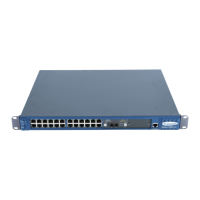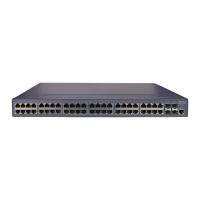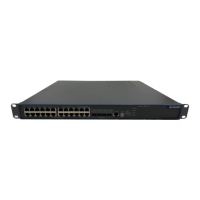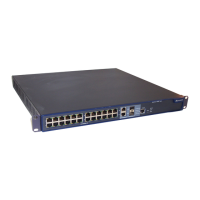Operation Manual – Multicast Protocol
Quidway S3900 Series Ethernet Switches-Release 1510 Chapter 1 Multicast Overview
Huawei Technologies Proprietary
1-6
z Addressing mechanism: Information is sent from a multicast source to a group of
receivers through multicast addresses.
z Host registration: A receiving host joins and leaves a multicast group dynamically
to implement membership registration.
z Multicast routing: A router or switch establishes a packet distribution tree and
transports packets from a multicast source to receivers.
z Multicast application: A multicast source must support multicast applications, such
as video conferencing. The TCP/IP protocol stack must support the function of
sending and receiving multicast information.
1.2.1 Multicast Address
As receivers are multiple hosts in a multicast group, you should be concerned about the
following questions:
z What destination should the information source send the information to in the
multicast mode?
z How to select the destination address, that is, how does the information source
know who the user is?
These questions are about multicast addressing. To enable the communication
between the information source and members of a multicast group (a group of
information receivers), network-layer multicast addresses, namely, IP multicast
addresses must be provided. In addition, a technology must be available to map IP
multicast addresses to link-layer MAC multicast addresses. The following sections
describe these two types of multicast addresses:
I. IP multicast address
Internet Assigned Numbers Authority (IANA) categorizes IP addresses into five classes:
A, B, C, D, and E. Unicast packets use IP addresses of Class A, B, and C based on
network scales. Class D IP addresses are used as destination addresses of multicast
packets. Class D address must not appear in the IP address field of a source IP
address of IP packets. Class E IP addresses are reserved for future use.
In unicast data transport, a data packet is transported hop by hop from the source
address to the destination address. In an IP multicast environment, there are a group of
destination addresses (called group address), rather than one address. All the
receivers join a group. Once they join the group, the data sent to this group of
addresses starts to be transported to the receivers. All the members in this group can
receive the data packets. This group is a multicast group.
A multicast group has the following characteristics:
z The membership of a group is dynamic. A host can join and leave a multicast
group at any time.
z A multicast group can be either permanent or temporary.

